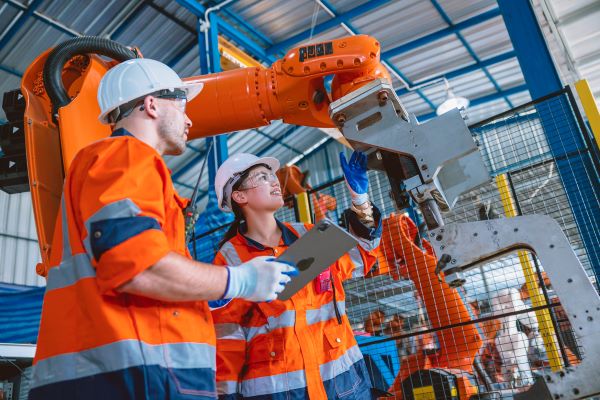ChatGPT reminds me of a politician: It can say a lot without saying very much at all.
I asked it to generate ten sentences on the use of AI for manufacturing work instructions, and what it produced had the ring of polished but deliberately vague rhetoric.
AI - it is what it eats
This is not a criticism of the tool, which just reflects existing internet content, but a reminder that the success of generative AI depends entirely on the quality of its diet – and what it is asked to do.
As the app itself responded: “By analyzing vast amounts of data, AI systems can identify patterns and best practices in manufacturing processes, allowing them to generate detailed and optimized work instructions for various tasks and operations.”
I’m a believer in the ability of generative AI to have a huge impact on how instructional content for assembly, training, and MRO use cases in manufacturing.
Address the quality deficit
So I am therefore convinced that manufacturing organizations need to address the quality deficit in their instructional content today, in order to lay the foundations for successful AI deployments tomorrow.
Because if you turned a ChatGPT-esque AI loose on instructional content at most manufacturers today – up to and including the heavyweights in the Fortune 500 – it would simply bake in the failures inherent in so much of this content.
It would take poor quality images, CAD screenshots, text-heavy descriptions, all wrapped up in ‘paper on glass’ PDF – the way things have been done for decades past – as a blueprint for the future.
What about the end user experience?
It would also not be able to take into account the quality of the end user’s experience of actually using the content, and the outcomes tied to that experience.
The way so much instructional content is created, presented, and consumed today generates delays and errors in critical processes, borne out of poor or delayed comprehension. This is what we need to get past – because the point of documentation is to ensure correct and efficient performance of important tasks.
So, first we need to get to the point where an AI can be trained on the creation of documentation built from more diverse content components – including video, animation, interactive models, and so forth. Visual, more interactive documentation which allows for more autonomy in the end user experience of solving challenges and establishing clarity is proven to reduce errors and delays. Let’s make sure we’re giving AI the good stuff.
Unlocking the real value
Then the real value can be unlocked: AI could be used not only to accelerate content production – which is essential given the rate at which new design data is now being generated – but also to drive constant optimization.
Digital interactive content consumed on an intelligent platform allows for experiences to be measured. Which steps in which processes take longer to complete? Which sections of a piece of instructional content result in more dwell time from the users? Which result in extra clarification being sought? Which content elements and formats are consistently associated with faster task completion?
You can't out-train a bad diet
Feed this data to your AI application and you can start to optimize instructional experiences to drive truly meaningful results.
None of this is imminent, but it is achievable, and we are working on it. But unless manufacturers upgrade today’s processes, the sunlit uplands of AI-enhanced instructional content will remain inaccessible. Failure to prepare, and all that…
When I finished writing this piece I went back to ChatGPT and asked it what it had in common with politicians. It concluded its reply as follows:
“ChatGPT’s responses are generated based on patterns in its training data, whereas politicians have personal motives and agendas.”
I half expected it to add a “😉”.



